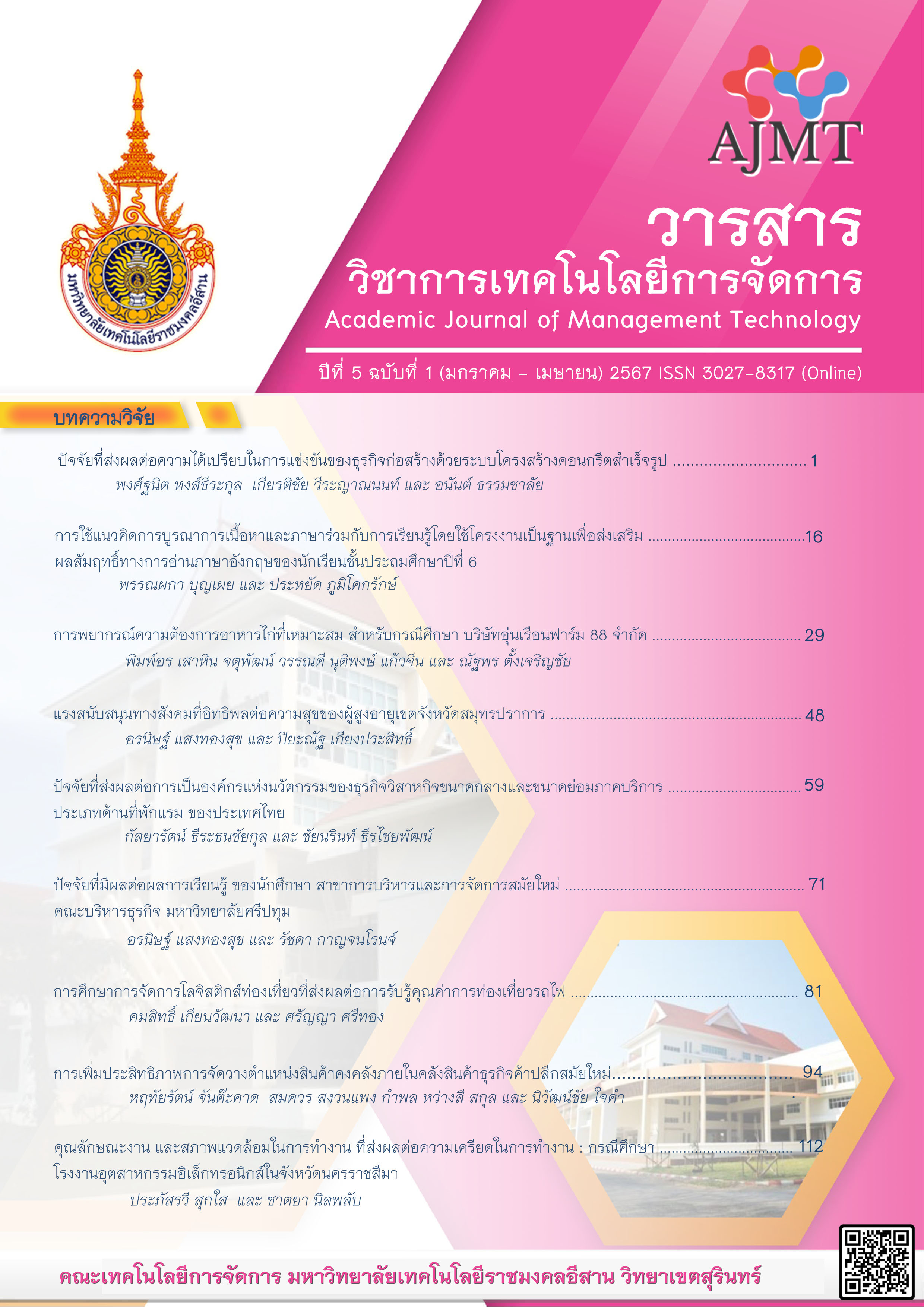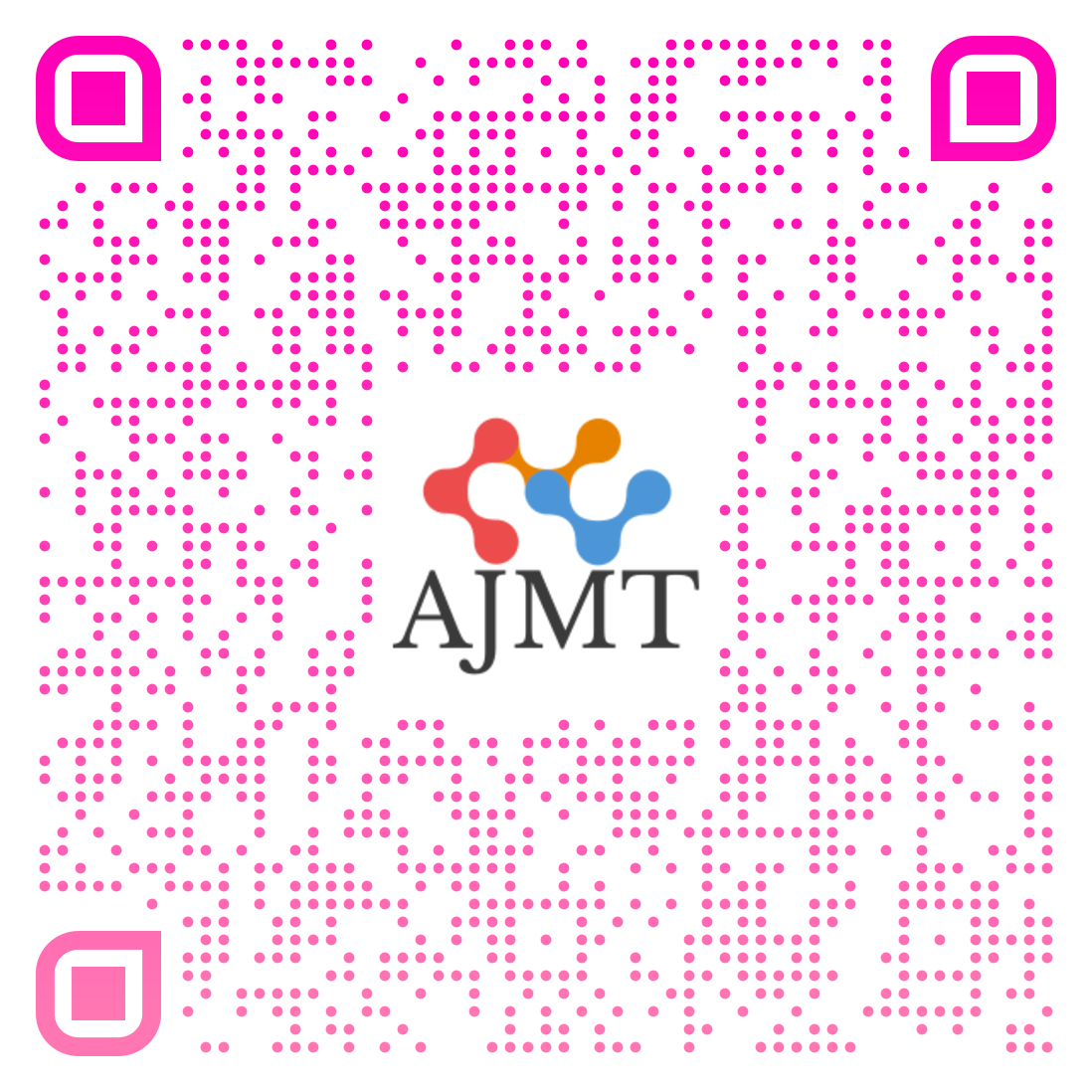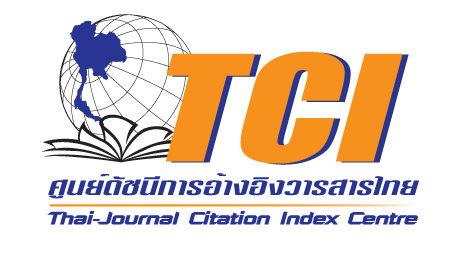A Study of Tourism Logistics Management Influencing Perceived Value of Rail Tourism
DOI:
https://doi.org/10.14456/ajmt.2024.7Keywords:
Tourism Logistics Management, Rail Tourism, Percieved Value of TourismAbstract
This research aimed to compare the differences in personal factors affecting the perceived value of rail tourism classified by gender, age, income, and education level, and to study the impact of tourism logistics management on the perceived value of rail tourism. The participants of the present study were 385 Thai tourists, obtained through accidental sampling. Quantitative data were collected using a questionnaire with a reliability coefficient of 0.88. The statistical methods employed for data analysis included descriptive statistics, Pearson's correlation, one-way analysis of variance (ANOVA), and multiple regression analysis using the Enter method, with a statistical significance level set at 0.05. The findings revealed that respondents with different personal factors, such as gender, age, income, and education level, did not significantly differ in their overall perceived value of rail tourism. Tourism logistics management, comprising physical flow, financial flow, and information flow, significantly influenced the perceived value of rail tourism at a 0.05 level. The factors with the most significant impact were financial flow (β = 0.443), followed by physical flow (β = 0.124) and information flow (β = 0.106). The results of this study can be used as a guideline for planning marketing strategies to promote rail tourism by emphasizing effective logistics management and enhancing tourists’ perceived value.
References
Boonsriroj, P. (2007). Quality of service management of Nakornping speacial express train, state railway of Thailand [Master’ s Thesis, Maejo University]. Maejo Digital Collection. http://webpac.library.mju. ac.th/
Brown, L., & Williams, R. (2019). Information flow in tourism: An analysis of destination Marketing organizations. Tourism Management, 38(5), 789-803.
Buhalis, D. & Law, R. (2008). Progress in information technology and tourism management: 20 years on and 10 years after the Internet-The state of eTourism research. Tourism Management, 29(4), 609-623.
Chaimankong, C. & Chaimankong, M. (2013). Logistics and supply chain strategy competing in the global market (7th Ed.). Vision Prepress.
Chatrongkakul, A. (2006). Consumer behavior. Thammasat press.
Cochran, W. G. (1977). Sampling techniques (3rd ed). John Wiley & Sons.
Division of Logistics, Department of industrial promotion. (2021). Logistics definition and term. https://dol.dip.go.th/en/category/2019-02-08-08-57-30/2019-07-21-16-50-25
Dwyer, L., & Mistilis, N. (2016). Beyond economic value: An alternative rationale for tourism as a tool for community development. Tourism Management, 53, 96-107.
Garcia, M., & Martinez, S. (2018). Logistics management in the cruise Industry: A case study of port operations. International Journal of Maritime Studies, 25(2), 213-227.
Green, A., & Robinson, P. (2017). Logistics and customer experience in eco-Tourism: A case study of safari Tours. Journal of Sustainable Tourism, 32(4), 541-556.
Hair, J. F., Jr., Black, W. C., Babin, B. J., & Anderson, R. E. (2009). Multivariate Data Analysis (7th ed). Pearson.
Han, Y., & Xie, G. (2019). Determinants of customer perceived online shopping logistics service quality value: An empirical Study from China. International Journal of Logistics Research and Applications, 22(6), 614-637.
Kieanwatana, K., Saynaratchai, K., Srithong, S., & Watcharaphaisankul, U. (2022). Factors influencing travel eecision-making on rail tourism during the COVID-19 pandemics. JMSPSRU, 4(2), 45-60.
Kosolsriwiwat, S. (2018). Railways and cultural tourism in the Kansai region. [Bachelor’s Individual Study]. Silpakorn University.
Liang, H. C. (2008). Impact of logistics service performance on tourist satisfaction and Loyalty [Doctoral dissertation, RMIT University]. CORE. https://core.ac.uk/download/pdf/43495012.pdf
Moya, S. (2019). Guidelines for the development of the railway services of Thailand to Thai tourists. The 2nd National Conference and presentation of student work on Humanities and Social Sciences (pp.723-728).https://hs.ssru.ac.th/useruploads/files/20190306/5e487e243c041ad4fd562e4cbe7e3503c04a6d82.pdf
Nakajad, T. (2020). Tourism logistics in terms of physical flow affecting the satisfaction of Thai tourists visiting Hat Yai District, Songkhla Province. http://www.ba-abstract.ru.ac.th/AbstractPdf/2563-5-6_1630 161 705. pdf
Nopphakate, K., & Aunyawong, W. (2022). The Relationship of tourism logistics management and destination brand loyalty: The mediating role of Thailand tourist satisfaction. International Journal of Health Sciences, 6, S5.
Nordlund, A., & Westin, K. (2013). Influence of values, beliefs, and age on intention to travel by a new railway line under construction in Northern Sweden. Transportation Research Part A: Policy and Practice, 48, 86-95.
Nunnally, J.C. & Bernstein, I.H. (1994). Psychometric Theory (3rd ed). McGraw- Hill.
Patterson, p. & Spreng, R. (1997). Modeling the relationship between perceived value, satisfaction and repurchase intentions in a business-to-business, services context: an empirical examination. International Journal of Service Industry Management, 8(5), 414-434.
Pourhashem, G., Malichová, E., Piscová, T., & Kováčiková, T. (2022). Gender difference in perception of value of travel time and travel mode choice behavior in Eight European countries. Sustainability, 14(16), 10426.
Sangthong, M., Seapoo, K., & Aotrit, S. (2022). Relationship Between Image and Service Quality Perceived
by customers of railway stations in Nakhon Si Thammarat province. Academic Journal of Management Technology, 3(2), 1-14.
Sereerat, S. (1995). Consumer behavior. Pattanasueksa.
Sereerat, S. (2017). Marketing management. Dharmasarn.
Sheth, J. N., Newman, B. I., & Gross, B. L. (1991). Why we buy what we buy: A theory of consumption values. Journal of Business Research, 22(2), 159-170.
Smith, J. & Johnson, A. (2020). The impact of destination logistics on tourist satisfaction. Journal of Tourism Research, 45(3), 321-335.
State Railway of Thailand. (n.d.). Holiday rail travel guidebook. https://www.railway.co.th
Thongsodsang, C. (2023). Assessing the value of service innovation in rail Industry. Academic Journal of Management Technology, 4(2), 154-168.
Tourism Authority of Thailand. (2023). Project to survey travel behavior of Thai people in 2023 Quarter 1. Brand Matrix Research.
Tourism Authority of Thailand. (2022). Project to survey travel behavior of Thai people in 2023. In-Touch Research and Consultancy.
Tuntavanitch, P. & Jindasri, P. (2018). Real meaning of IOC. JEM-MSU, 24(2), 3-12.
Wang, S. T. E. (2013). The influence of visual packaging design on perceived food product quality, value, and brand preference. International Journal of Retail & Distribution Management, 41(10), 805-816.
Xia, W. & Zhang, J. (2019). A Study of Railway Passenger Flows in China: Characteristics, Challenges, and Implications for Policy. Transportation Research Part A: Policy and Practice, 121, 158-172.
Yiamjanya, S. (2019). Railway tourism: diversifying Thai tourism case study: Mae Klong railway line. Research and Development Journal Suan Sunandha Rajabhat University, 11(1). http://www.elic.ssru.ac.th/siripen_yi/pluginfile.php/75/mod_page/content/16/%E0%B8%9A%E0%B 8%97%E0%B8% 84%E0%B8%A7%E0%B8%B2%E0%B8%A1-62.pdf.
Downloads
Published
How to Cite
Issue
Section
License
Copyright (c) 2024 คณะเทคโนโลยีการจัดการ มหาวิทยาลัยเทคโนโลยีราชมงคลอีสาน วิทยาเขตสุรินทร์

This work is licensed under a Creative Commons Attribution-NonCommercial-NoDerivatives 4.0 International License.
บทความที่ได้รับการตีพิมพ์เป็นลิขสิทธิ์ของคณะเทคโนโลยีการจัดการ มหาวิทยาลัยเทคโนโลยีราชมงคลอีสาน วิทยาเขตสุรินทร์
ข้อความที่ปรากฏในบทความแต่ละเรื่องในวารสารวิชาการเล่มนี้ เป็นความคิดเห็นส่วนตัวของผู้เขียนแต่ละท่านไม่เกี่ยวข้องกับคณะเทคโนโลยีการจัดการ มหาวิทยาลัยเทคโนโลยีราชมงคลอีสาน วิทยาเขตสุรินทร์ และคณาจารย์ท่านอื่นๆในมหาวิทยาลัยฯ แต่อย่างใด ความรับผิดชอบองค์ประกอบทั้งหมดของบทความแต่ละเรื่องเป็นของผู้เขียนแต่ละท่าน หากมีความผิดพลาดใดๆ ผู้เขียนแต่ละท่านจะรับผิดชอบบทความของตนเองแต่ผู้เดียว











